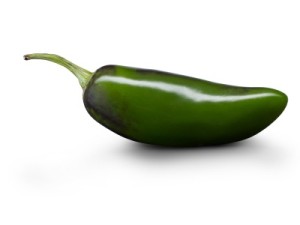
A recent whiskey tasting at Maggie O'Neill's. From left: Steve and Carol Pester, Shaun Griffin and Eastern Pennsylvania Whiskey Society presider Kevin Quinn.
Kevin Quinn does not claim to be “a professor of whiskey-ology,” but he does know a fair bit more than the average imbiber about the aromatic amber spirit revered by kings and commoners alike as “the water of life.”
As a professed “enthusiast,” this private school teacher of physics and computer science and former part-time bartender at Maggie O’Neill’s in Drexel Hill collects obscure and intricate details about the process of Irish whiskey making, from the distilling process to the casks in which the whiskeys are aged. He can quote chapter and verse on the history of whiskey in Ireland. He speaks about Irish whiskey with the reverence and erudition more commonly associated with lovers of great wines.
Actually, some experience with wine helped him along on the path to whiskey appreciation. When Quinn was a senior at Bucknell, the president of the university hosted wine tastings. Quinn attended them, and learned the ropes. At about the same time, he came under the influence of two uncles who know and love Irish whiskey, and he discovered that tasting whiskey requires many of the same sensory skills.
“The production of whiskey and wine is similar,” he says. “The way you grade them and drink them is similar. You judge things like color, viscosity, finish, and nose. As with wine, there are things on the label that tell you what to expect. The only real difference is in some of the stages of production. Wine ages in the bottle; whiskey doesn’t. Once it gets bottled, it is what it is.”
Like many, Quinn was not overly enamored of the taste of whiskey when he first tried it. But at some point, something about Irish whiskey began to appeal to him. Now he loves Irish whiskey in the way gearheads adore Lambos. “The thing I like most about Irish whiskey is how smooth it is,” he says. “Often, people take a whole shot of whiskey and toss it back, but Irish whiskey is meant to be sipped. If you really sip it, you get a smooth finish. (“Finish” refers to how long the taste lingers on your taste buds after you sip it.) I like them to have a long finish. I can take a glass of whiskey and sip it over an hour, and not even finish it, and yet still taste it the entire time. A better whiskey should stick with you.”
Along with its finish, Quinn also takes time to appreciate a whiskey’s aroma, or nose, which can be very different from one whiskey to the next. Whiskies can be complex: malty, fruity, sweet like cake, honey or sherry, spicy, nutty, even peppery. It takes time to appreciate all of the subtle notes, but Quinn says it’s worth the effort. “When you nose whiskey, you don’t take a big, deep inhale and you don’t stick your nose in the glass, like with wine. With whiskey, you keep your nose above the glass and take a short, sustained sniff. Then you take another one. Then, on the third one, you can pick up the subtle notes. You really taste with your nose a lot. It gives you a preview of what you’re in for.”
At this point in Quinn’s whiskey tasting career, he’s nosed quite a few varieties, probably more than 20 whiskeys. Getting to that level can be hard. First, you have to cope with Pennsylvania’s antiquated liquor sales establishment. Usually, the state stores stock are no more than four or five whiskeys—the usual suspects like Jameson’s, Bushmills and Tullamore Dew, all very good but really just a fraction of the Irish whiskeys available. And more than a few whiskeys, he says, are not available in the United States at all.
His favorite is Redbreast Pure Pot Still Irish Whiskey, described by the Web site Epicurious as the “ne plus ultra of spirits.” Says Quinn, “It is the most characteristically Irish whiskey you can get. It’s very rich, and incredibly smooth.
Jameson 12 year is another good Irish whiskey. It’s very good, but it’s also affordable. I also have a bottle of Black Bushmills. It’s not super expensive but it’s very good.”
There are many more Irish whiskies, though, many of them quite costly.
“Bushmills 16 year old is a fantastic Irish whiskey; so is Jameson 18 year,” Quinn says. “Midleton Very Rare is about $140 a bottle, so I don’t get to drink that very much. Connemara is a single malt Irish whiskey. This is from the Cooley Distillery, the only Irish distillery (the other two are owned by Pernod Ricard). The nice thing about Connemara is that it’s peated, one of the steps in making Scotch whiskey. Usually, with Irish whiskey they put the malt in a closed kiln and heat it with coal. With Connemara, they put it in a kiln and leave it open and they heat it with peat. The smoky flavor gets into the grain and into the whiskey. Connemara tastes like Scotch because it’s very peaty, but it finishes like Irish whiskey. It’s very smooth.”
Most people who appreciate Irish whiskey nonetheless tend to stop at one or two brands that they prefer. But Quinn thinks they might be missing out: “There might be something better.”
Quinn hopes to open whiskey lovers’ eyes (and noses and taste buds) to something better through the Eastern Pennsylvania Whiskey Society—a new project sponsored by Maggie O’Neill’s. Maggie’s has held whiskey tastings before on about a quarterly basis, says owner Mike O’Kane. These are much more formal affairs usually paired with food. But the whiskey society will meet more frequently, and focus on tasting just one variety at a time. Quinn is the master of ceremonies. The next meeting is Tuesday, January 12, at 7 p.m., at the well-known Delaware County eatery. (Maggie O’Neill’s is in the Pilgrim Gardens Shopping Center, 1062 Pontiac Road, in Drexel Hill.)
“It’s pretty informal,” says O’Kane. “We shoot out an e-mail blast just to get a sense of who’s coming. They’re welcome to bring friends. We encourage that.”
O’Kane says the whiskey society was Quinn’s brainstorm: “We just thought it was a cool idea to sample some good whiskey and enjoy each other’s company.” For Maggie O’Neill’s, which stocks about 20 Irish whiskeys, the scheme seemed like a natural.
If you want to join in the good company and learn a thing or two about Irish whiskey, contact Maggie O’Neill’s at (610) 449-9889.
 The folks at Tex Mex Connection, a popular eatery in North Wales known for its tasty Southwestern fare, is no stranger to “spirit dinners”—special prix fixe meals pairing food with liquor tastings. They’ve hosted very popular tequila dinners several times.
The folks at Tex Mex Connection, a popular eatery in North Wales known for its tasty Southwestern fare, is no stranger to “spirit dinners”—special prix fixe meals pairing food with liquor tastings. They’ve hosted very popular tequila dinners several times.

